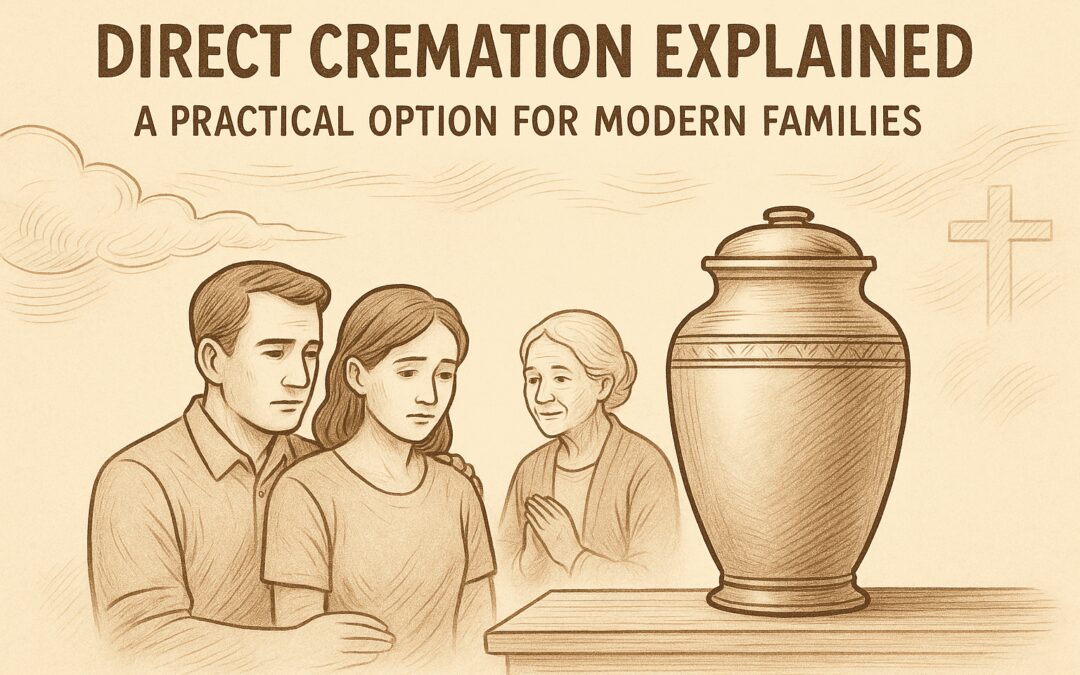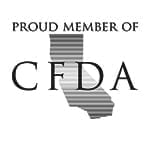A Simple Choice When Someone Dies
When a loved one passes, families today often pick direct cremation instead of traditional funeral services. This easy option helps families honor their loved ones while dealing with money worries during a difficult time.
Direct cremation is different from old-style funeral arrangements. It lets families focus on what truly matters when making final arrangements.
What Is Direct Cremation?
What is direct cremation precisely? A cremation process happens right after death. No funeral ceremony or viewing occurs first.
When families choose this option, the funeral director quickly transports the body for cremation. This happens after completing death certificates and waiting periods.
This cheap option cuts out many parts of traditional funeral services:
- No embalming needed
- No funeral procession
- No formal funeral ceremony before cremation
- No cemetery plots required
The focus stays on the direct cremation process. This gives dignity while letting families plan memorial activities away from burial services.
Cremation Process Step by Step
How the Direct Cremation Process Works
The cremation process step by step follows clear steps that focus on being respectful:
- First steps: The funeral director transports the body from where the person died
- Paperwork: Death certificates and permits get filled out by cremation services
- Waiting time: Most places need 24-48 hours before the cremation process starts
- Cremation: Takes 2-3 hours in special buildings
- Final step: Cremated remains get ready to be returned to the family
What Families Get Back
After the direct cremation process, cremated remains are returned to the family with:
- Death certificates copies
- Certificate of cremation
- Any personal items that didn’t get cremated
Why Families Choose Direct Cremation
Significant Financial Savings Over Traditional Funeral Costs
Traditional funeral costs average $7,000-$15,000. Direct cremation costs $1,000-$3,000. Families save money on traditional funeral expenses like:
- Embalming and prep work ($500-$800)
- Caskets for traditional burials ($2,000-$10,000)
- Funeral building rental ($1,500-$3,000)
- Funeral procession and transport ($1,000-$2,000)
- Cemetery plots for burial or cremation ($1,000-$5,000)
Personal Choices
Many modern families like simple things better than fancy traditional funeral arrangements. When a loved one passes, direct cremation fits with values that focus on personal choice. This lets families spend time on meaningful ways to remember.
Total Freedom for Memorials
Unlike traditional funeral services that need quick arrangements, families can spend time making personal tributes. This freedom lets families:
- Plan memorial examples that show the person’s personality
- Display family photos in comfortable places
- Set up gatherings where relatives can share memories
- Pick meaningful spots for final resting celebrations
For example, one family held their grandmother’s celebration three months after the direct cremation process. This let distant family member join in. Another chose to share memories at their father’s favorite fishing spot, making a personal final resting tribute.
Understanding Family Dynamics in Cremation Services
How Direct Cremation Differs from Traditional Funeral
Traditional funeral services happen within days when a loved one passes. This creates stress during a difficult time. The direct cremation process takes away this pressure. Families can spend time dealing with grief before planning life services.
Memorial examples include families who:
- Held birthday parties months later with family photos displays
- Set up restaurant gatherings where relatives could share memories
- Made outdoor ceremonies at meaningful places
- Planned life services that showed personal interests
Dealing with Family Member Concerns
Questions About Respect: Professional cremation services keep the same care standards. The funeral director gives the same respect during the direct cremation process as with traditional funeral arrangements.
Family Dynamics: When family member preferences differ about burial or cremation, discuss reasons for picking direct cremation. Discuss personalized life services opportunities.
Old-Style Expectations: Some family members can address their worries about leaving traditional funeral services. Explain how memorial examples allow meaningful tribute creation.
Making Cremation Services Decisions
Checking Your Family’s Needs During a Difficult Time
Think about these things when choosing between burial or cremation:
Traditional funeral costs: Can your family easily pay for traditional funeral services and cemetery plots? Family dynamics: Are family member schedules hard for quick traditional funeral arrangements? Personal values: Do you like flexibility more than traditional funeral ceremony rules? Final resting preferences: Were wishes shared about burial services versus cremation?
Picking Cremation Services Providers
Look for cremation services with:
- Licensed funeral director watching over things
- Clear pricing for the direct cremation process
- Easy explanations of cremation process step by step
- Kind service during this difficult time
Important questions for funeral director meetings:
- What does the direct cremation process pricing include?
- How do authorities track and return cremated remains to the family?
- What memorial examples can you show?
- Can we handle family member preferences?
- Do you help with death certificates and permits?
Planning Ahead for Final Arrangements
The best approach is making preferences known before a loved one passes. This removes decision stress from family member during grief.
Those thinking about direct cremation can:
- Research local cremation services costs versus traditional funeral costs
- Compare burial or cremation options
- Discuss preferences with each family member.
- Write wishes about final resting arrangements.
Memorial Examples and Life Services Options
Making Meaningful Tributes
Without traditional funeral ceremony limits, families can spend time making personalized life services:
Home gatherings: Show family photos, play favorite music, and share memories in comfortable settings where relatives can join naturally.
Outdoor celebrations: Hold memorial examples at parks, beaches, or other meaningful places for final resting ceremonies.
Restaurant memorial meals: Set up gatherings where family member participants can share memories over meals in relaxed settings.
Scattering ceremonies: Make final resting tributes at places special to the dead person. This lets families share memories in meaningful settings.
Common Questions About the Direct Cremation Process
How does the cremation process step by step work? The funeral director moves the body and fills out death certificates. They wait the required time before cremation. After that, the crematory staff returns the cremated remains to the family.
What’s the difference between traditional funeral costs and direct cremation? Traditional funeral services cost $7,000-$15,000 including cemetery plots. Direct cremation costs $1,000-$3,000.
Are families able to hold life services? Yes. Many families make more personal memorial examples without traditional funeral ceremony limits.
How does the facility return cremated remains to the family? The crematory staff returns the cremated remains to the family in chosen containers. Often family member participants can split them.
Modern Approach When a Loved One Passes
Direct cremation shows changing ideas about traditional funeral arrangements. As family dynamics become more complex, flexible options for final arrangements are more important during tough times.
This trend addresses real challenges. Here’s a simplified version of the text, split into shorter sentences:
– There are travel problems for family members.
– Different financial situations can affect funeral costs.
– Some people choose to move away from traditional services.
– Families choose more personalized celebrations of life.
Honoring Memory Through Personal Choice
When a loved one passes, direct cremation gives families a respectful alternative to traditional funeral services. This approach helps families focus on what is important. It cuts out complicated funeral arrangements. This way, families can spend their time and resources on what matters most during a tough time.
The choice between burial or cremation isn’t about right versus wrong approaches. Finding options that fit individual family dynamics, values, and situations is essential when making final arrangements.
For many families today, direct cremation offers a good balance. It helps them honor their loved ones while handling practical concerns. It offers dignity without traditional funeral costs, respect without fancy funeral ceremony rules, and flexibility allowing meaningful life services and memorial examples.
As cremation services become normal, they keep serving families well when a loved one passes. Understanding how direct cremation works can help your family. It allows family members to share memories and find comfort during this tough time.








